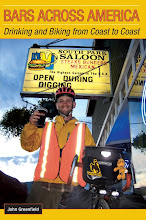
Wednesday, May 21, I rode in Chicago’s Ride of Silence, part of a worldwide tribute to bicyclists who have been killed by motor vehicles.
The memorial originated in Dallas in 2003 after endurance rider Larry Schwartz died when a bus sideswiped him on a deserted highway. This year cyclists in almost 300 cities participated, demonstrating that bikers should be allowed to ride safely, without fear of being struck by cars.
Although the message of the Ride of Silence is similar to that expressed by Critical Mass participants, its means are different. Instead of taking over the streets, memorial riders roll slowly in single file, wordlessly. Rather than celebratory, the mood of the procession is solemn and contemplative.
The ride had special resonance in Chicago because this has been a bad year for bike fatalities. According to CDOT figures from 2001 to 2005 an average of six cyclists per year were killed in crashes here; at least three died between February and April of this year alone.

While previous local rides drew at most 50 participants, about 200 showed up at Daley Plaza this year, including family and friends of young people who died this year: Matthew Manger-Lynch, Tyler Fabeck and Amanda Annis. Many people pinned signs to the back of their shirts or bags commemorating them, as well other fallen Chicago riders like Ryan Boudreau, Blanca Ocasio, Tom McBride and Isai Medina.
Organizer Elizabeth Adamczyk distributed cloth armbands to cyclists: black for those who were there to honor others; red for those who had been injured by cars themselves. “You’re a survivor if you’re wearing red,” she said.
Lauren Vega, who sported a “You’d look hotter in a helmet” sticker on her own headgear, wore a black armband. “I’ve only had one crash,” she said. “It was me versus the alley and the alley won. I’ve never had an altercation with anything moving, but this ride is just a good idea.”
Before the riders hit the street, Adamczyk addressed the crowd. “We’re here to raise awareness that cycles have a right to share the road legally,” she said. “We’re not here to be confrontational with motorists. We’re going to let the silence roar.”
She then read from a poem written for the occasion by Mike Murgas ending, “Tonight’s ride is to make others aware / The road is there for all to share / To those not with us or by our side, / May God be your partner on your final ride.”

Cyclists then rolled out of the plaza, heading west on Randolph St. with riders and police cars “corking” the late rush-hour traffic. As we headed north out of the Loop, almost all riders respected the request for silence and the relative hush made the line of bicycles seem like a funeral cortege, in an effective way.
Although the front of the line stopped at all stoplights, the rest of the procession did continue through intersections as signals changed from green to red, so a few blasts of car horns did break the calm. But overall, bystanders seemed intrigued by the long string of serious, silent bicyclists as we headed up Wells St. and Lincoln Ave. to Lincoln Park.

I had to leave at Fullerton, but friends told me the riders stayed on course with little static from cars. The cyclists visited the sites of recent fatalities on the North Side, most of them marked by white-painted Ghost Bikes locked nearby with signs memorializing the fallen.
First they headed to the intersection of Lincoln / Damen / Irving Park in North Center, where Matthew Manger-Lynch, 29, was hit by an SUV on February 24. From there the group rode south to Western Ave. and Logan Blvd., a complex crossing in Logan Square where Tyler Fabeck, 22, was struck by an eastbound driver on Aril 20.

After rounding Logan Square’s Centennial Monument, the procession continued to the corner of Kedzie Blvd. and Armitage Ave. where two young women were killed within the space of a few months. On September 11 of last year Blanca Ocasio, 19, was hit by a right-turning garbage truck. Amanda Annis, 24, was struck there on April 30 when a car ran a red light.
The ride concluded at the Empty Bottle, 1035 N. Western, where Isai Medina was killed by a vehicle that hopped the curb as Medina stood on the sidewalk with his “chopper” bicycle.
All of these people will be missed by their loved ones for many years to come. Chicago’s Ride of Silence served as a reminder to motorists to drive with care and be mindful of their vehicles’ potential to take lives.





